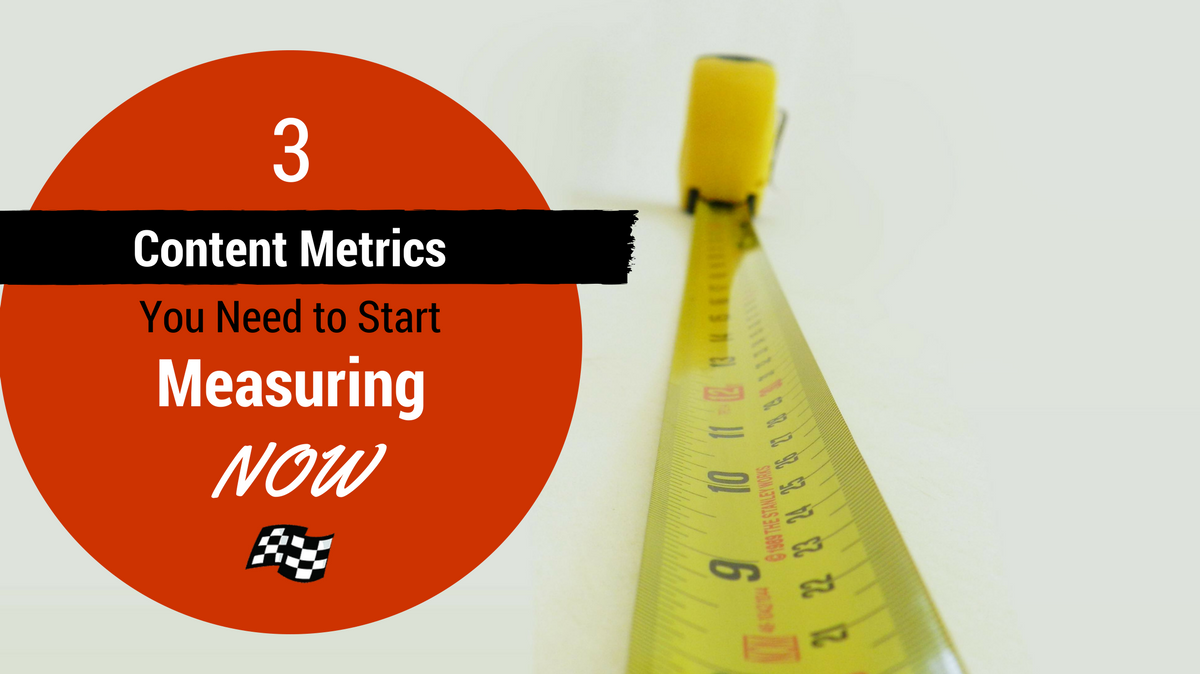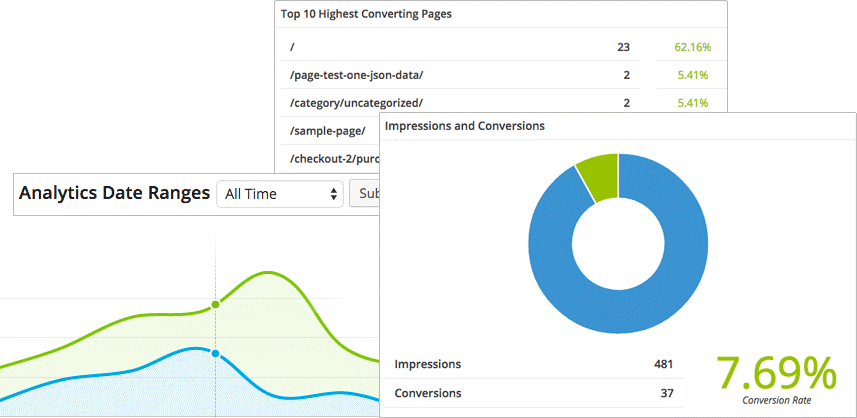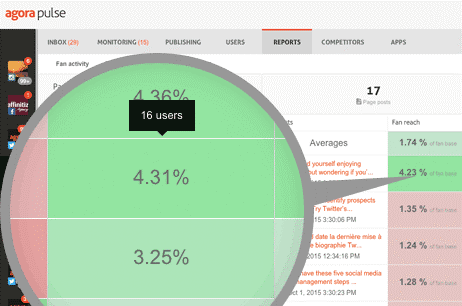
As bloggers, there are so many tasks demanding our time — creating the content, promoting it, engaging with readers — that measuring never gets enough attention, at least not beyond a cursory glance at traffic stats and social media shares.
Measuring your success, though, is extremely important, helping you become a better, more successful blogger. In this blog post, I’ll share with you the most important content metrics and how to measure them to make informed changes to your content.
Why should you be measuring?
When I say “measuring,” I mean more than just checking your website analytics (e.g., traffic stats, social media shares). Bloggers should take a deeper look into their metrics so they can better understand what they’re doing right — and what they’re doing wrong.
If you’re really studying your content on a deeper level, you’ll gain better insight into your audience and what they want to read (types of content, formats, etc.).
When you’re measuring the ROI of your content marketing, you need to find information that will help you take action — action that will help improve your blog in the future and help it continue getting better and better results over time.
Before you start measuring, though, you should develop a content marketing strategy and a plan for your blog, complete with goals. Think of what you want to achieve and then put it into a clear, specific, realistic, and time-bound goal. This will give you something clear to work towards, and you’ll know what types of content to create for your blog in order to achieve your goals. Plus, you’ll know exactly what to measure when the deadline is reached so that you can understand why your goal was or wasn’t reached.
Now, let’s look into the 3 main content stats that you should be measuring:
 The 3 main content stats that you should be measuring
The 3 main content stats that you should be measuring
1. New Subscribers
As a blogger, your subscriber list is most likely one of your most valuable assets. It builds loyalty among your readers and ensures a steady stream of traffic to your blog, among other benefits.
That’s why you should have a few different opt-in forms on your blog, offering different incentives. For example, you might want a site-wide opt-in form that would appeal to a bigger part of your audience along with other forms offering different content downloads to appeal to different niches in your readership.
Now, the question is, what types of incentives work best with your audience?

That’s why you need to take a deeper look at your subscriber analytics (if you use tools like Optinmonster for your opt-ins, they usually also provide analytics). Doing so will help you identify your best performing content. You can then use that knowledge to create better incentives for your opt-ins and, consequently, get more subscribers.
For example, you could discover that your readers need help and knowledge on a particular subject that you cover on your website; or, it could be that they prefer a particular format (checklists, how-to guides and so on).
2. Post popularity on your blog and social
Blog traffic and social media shares are probably the most immediately noticed metrics on your blog. However, it’s worth taking a deeper look at your individual blog posts to better understand why they’re getting (or not getting) the amount of traffic and social shares they are. This way, you can get a better idea of what your audience best connects with, what types of content they’re most interested in, and what content drives them to share on social media and engage with you.
Look beyond traffic and shares and track other social media metrics, like your engagement: How many comments are your posts getting on your blog? Are people engaging with your post on social media or just sharing?
Use your Google Analytics account to study the traffic for each piece of content in order to find the common link between your best performing content, as well as the common link between your worst performing content. Then, take a look at the comments for your blog to find out what drives your readers to engage. After all, the more involved your readers are with your blog, the better.
Similarly, study your blog posts’ success on social media. You can use a tool like Agorapulse (or look to see if your social media dashboard has this reporting feature) to check what your best performing posts are.

It’s important to create the type of content that gets you shares on social media because the more people engage and share your posts, the more traffic you will get on your blog — as well as more social media followers.
3. Your blog’s search engine ranking
A good search engine ranking can make a world of difference to your blog’s success. The higher up you are in search engine results, the more traffic you will get to your blog, consistently. And blogging can be of huge help with SEO and link building.
Not to mention, when your domain authority grows, so do the opportunities that come directly to you — the more your DA grows, the more emails you’ll start getting from people wanting to work with you, guest post on your blog, pay you for services, and so on.
Although you should always, always write for your readers first, that doesn’t mean that you can’t also make sure your content is good for search engines, too. Research the best keywords in your niche and then write content surrounding that keyword.
Optimize all of your blog posts, as well as any visual content you use on your blog. You can use an SEO tool for bloggers like Yoast SEO to help you make sure your content is optimized. Even if you’re not very familiar with SEO practices, Yoast tells you exactly what you need to do:

To measure the quality of your website and the success of your SEO efforts, there are several things that you should check:
- Your website’s domain authority: There are several free tools that you can use, such as the Website Authority Checker and the Website SEO Checker.
- Your backlinks: Backlinks help improve your blog’s visibility. You should constantly work towards building more (quality) links. You can then use a tool like Moz’s Open Site Explorer to research your backlinks. Is your link building improving your SEO?
- Check your keyword ranking: Use tools like Semrush’s Position Tracking Tool to track your keyword ranking for Google or the free Keyword Rank Checker.
Measuring these metrics will help you identify opportunities for better search engine optimization so you can improve your ranking and reach a much larger audience.
Conclusion
The best way to improve your blog’s success is to look back on your own work and learn not only from your mistakes but also your successes. Not to mention, studying your metrics in more detail will help you gain a better understanding of your audience and your readers, of what they want to read about and what they don’t.
All of this can help you improve your content, as well as your blog so that you can improve your results month by month.
